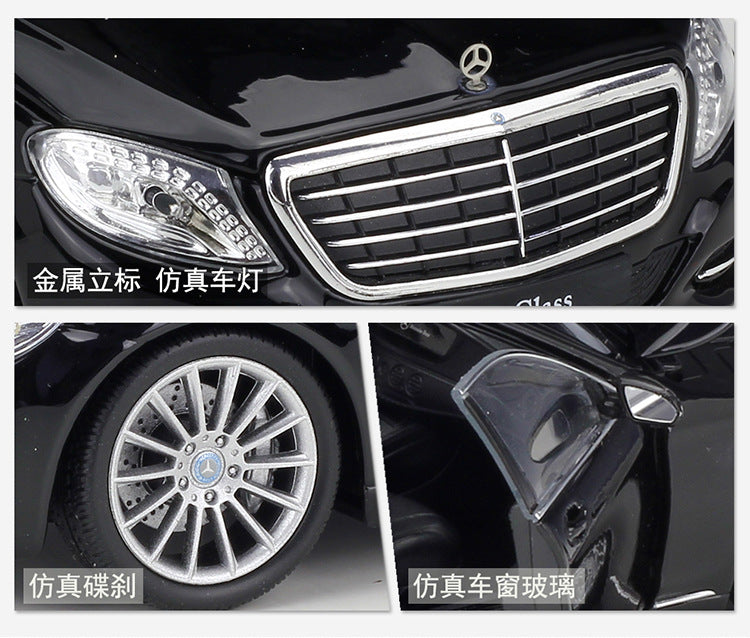old boy hobby
1/24 Scale Mercedes-Benz S-Class Luxury Sedan Diecast Model Car
1/24 Scale Mercedes-Benz S-Class Luxury Sedan Diecast Model Car
Couldn't load pickup availability
- diecast and pre-painted, ready to display
- material: metal & plastic
- scale: 1/24
- size: 20*7.5*5 cm
The Mercedes-Benz S-Class, formerly known as Sonderklasse (German for "special class", abbreviated as "S-Klasse"), is a series of full-sized luxury sedans, limousines and armored sedans produced by the German automaker Mercedes-Benz. The S-Class is the designation for top-of-the-line Mercedes-Benz models and was officially introduced in 1972 with the W116, and has remained in use ever since. The S-Class is the flagship vehicle for Mercedes-Benz, being positioned above the other Mercedes-Benz models.
The S-Class has debuted many of the company's latest innovations, including drivetrain technologies, interior features, and safety systems (such as the first seatbelt pretensioners). The S-Class has ranked as the world's best-selling luxury sedan. In automotive terms, Sonderklasse refers to "a specially outfitted car." Although used colloquially for decades, following its official application in 1972, six generations of officially named S-Klasse sedans have been produced.
In 1981, the two-door, four-seat S-Class, designated as SEC, was introduced, sharing the petrol V8 engines with its four-door version, W126. After the introduction of a new nomenclature scheme, SEC was simply renamed as S-Class Coupé. For the 1996 model year, the coupé was separated from the S-Class line and named as new CL-Class (in line with other two-door models: CLK, SL, and SLK); however, the CL-Class was reintegrated into the S-Class model line (same with CLK becoming E-Class Coupé and Cabriolet). The first-ever S-Class convertible since 1972, internally named A217, was introduced and became a one-generation model only. After the end of W222 production in 2020, the successors to the C217 coupé and A217 convertible are not planned, citing the low demand for those models and stronger demand for SUV models.
--copied from Wikipedia
Share






















